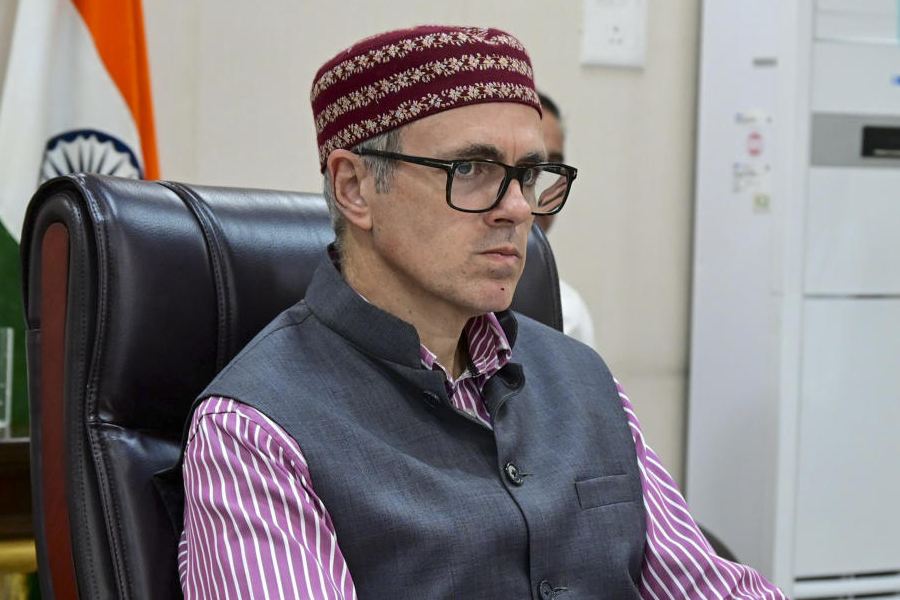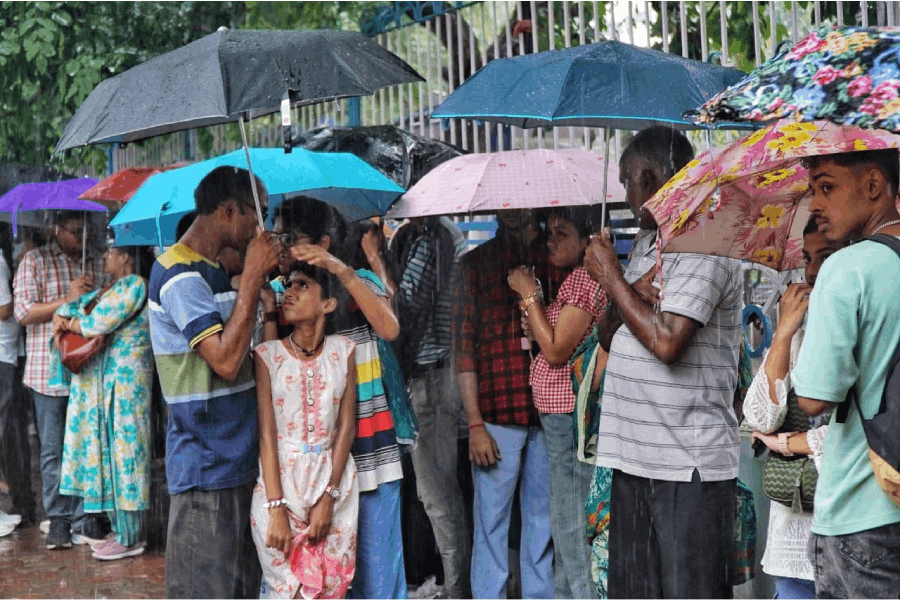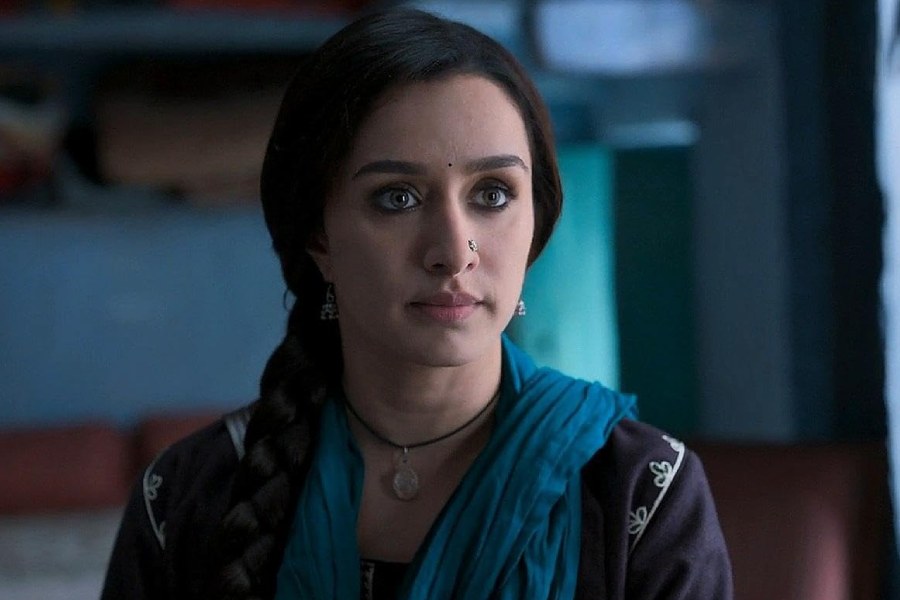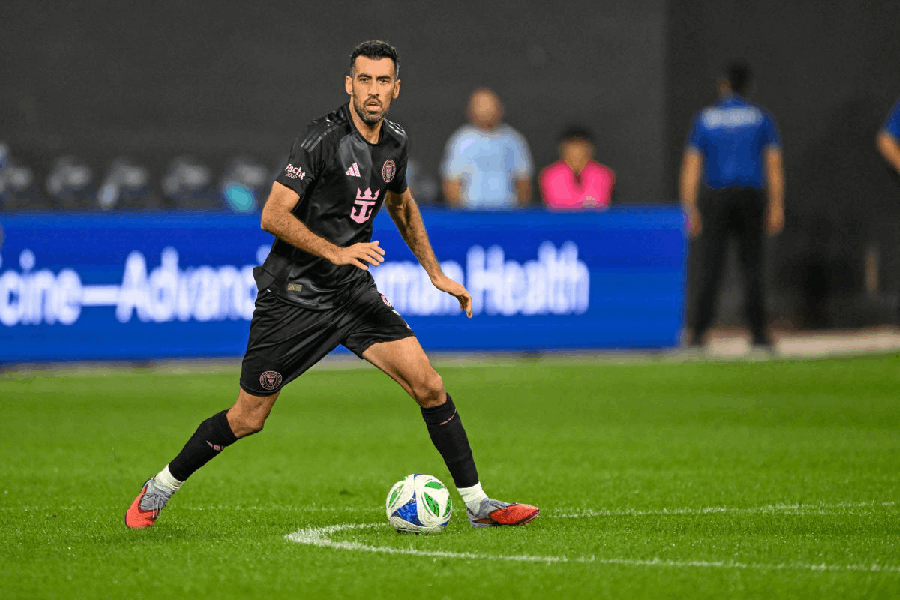 |  |
| (Left) Two African-origin women walk down the Khirke extension on Monday; the lane and the houses in which the women, who were allegedly assaulted by the mob last Wednesday, live. (Yasir Iqbal) | |
New Delhi, Jan. 21: Mohammad Rafi has an unusual address — 24 Habshi Lane.
But look up the postal directory and you’ll draw a blank. Habshi Lane doesn’t exist in official records; it’s an extension of a deep-rooted racial divide.
So deep is the mindset that Rafi is wary of entering the labyrinth of narrow by-lanes after 9 in the night. The open garbage dumps, the tangle of naked electrical wires and dimly lit pathways don’t scare him. It’s his neighbours, he says. “That’s when the Habshis come out.”
The lane’s actual name is Khirke Extension, and Habshi is an allusion to the several thousand African-origin residents of the south Delhi area who live rough in small rented rooms and share a common bathroom, in some cases with at least 10 others.
According to the Encyclopaedia Britannica, Habshi, an Arabic word that literally means Abyssinian, was used for African and Abyssinian slaves in pre-British India.
The name stuck.
Today, nearly a week after Delhi law minister Somnath Bharti’s late-night raid on some African women on the suspicion that they were involved in a drug-and-sex racket, the racial profiling that began with the name of the lane itself was back under the glare.
Since the raid there have been two sets of narratives. One alleging that the Africans have turned the area into a den of vice, the other claiming they are victims of prejudice.
“Local residents shoot rubber pellets at them, aiming at their behinds, while small children spit at them without any provocation. Of course, these people react,” said Lekmon, who works with the NGO Khoj.
The activist, originally from Himachal Pradesh, has been living at Khirke for the past six months.
Khirke is flanked by malls, upmarket restaurants, pubs and super-specialty hospitals. An estimated 3,000 Africans, mostly from Uganda and Nigeria, live in the area on rent, paying anything between Rs 7,000 and Rs 10,000 per head for around 40 square metres of living area, which includes a kitchen and a living room.
Bathrooms are often shared. One of the four African women raided on January 15 night by a mob allegedly led by Bharti shares a bathroom with at least 10 others.
Most of the landlords stay away from the area, home to people from countries like Uganda, Nigeria, Cameroon and Somalia. But it’s not just Africans who make up the foreigner population at Khirke Extension. There are people from Afghanistan and Nepal who come for treatment.
There are people from other parts of India, too. Many Manipuris live here, as do some Kashmiris.
Some of the African residents this correspondent spoke to said they chose Khirke because they could live cheap here. Since most of them claimed to be students, the other reason must have been the area’s proximity to many educational institutes, including the Indira Gandhi Open University where many of them said they were enrolled.
But while the other foreigners have blended in with local people, the Africans have mostly remained “outsiders”, despite living cheek by jowl for years.
“Like in any community, there are bad and good people. The same is the case here. I cannot say that none of us do drugs, but I can definitely say that not all of us do so. Just because the African women wear short clothes doesn’t mean they are prostitutes,” said Jason, a Nigerian, who has been staying in the area for over three years.
An African woman alleged harassment on the streets. “Some local residents have even tried to enter our rooms at night. They think we are easy. Indian women in nearby malls and pubs wear clothes similar to the ones we wear. We see stories of Indian men raping women. We have seen activists talking of women’s rights. But there is no one to condemn what happened here. Are we not women? Even if we were all sex workers, as they claim, they have no right to assault us,” said an Ugandan national.
Shakeel Ahmed, who runs a store, has a different take. “They (the Africans) stand in street corners and solicit clients. They relieve themselves in front of our temples. They come in carrying beer crates and stagger out drunk. After 9, you can hear them shouting out the amount they will charge for their services. Initially, only other Africans would respond, but now they are drawing in locals too. They often fight among themselves and create a ruckus,” he said.
“We have been complaining for the last two years but, except for Bharti, no one has come to listen to us,” said Ramesh Bisht, another resident.
Aditya Kaushik, who has rented out rooms to Africans, called for building trust. “The problem is there has been no community outreach programmes here. Culturally, the Africans and the local people are so different that it is difficult for them to attune to each other…. Instead of creating a bigger problem, there should have been an effort to calm nerves. Thousands of our children go to study abroad. How would we feel if all of them were branded criminals?” asked Aditya.
Aastha Chauhan, an artist with Khoj, summed up what she called the “texture” of discrimination.
“The texture of the discrimination they (Africans) face is close to the kind my friends from Northeast India face. But the intensity of it is much, much more and the Africans here have fewer defenders. Our xenophobia is hardly concealed when it comes to Africans — and I have witnessed it myself repeatedly when walking down the street with my friends, or during other incidents of racism that I have tried to raise awareness about,” she wrote in a blog today.











